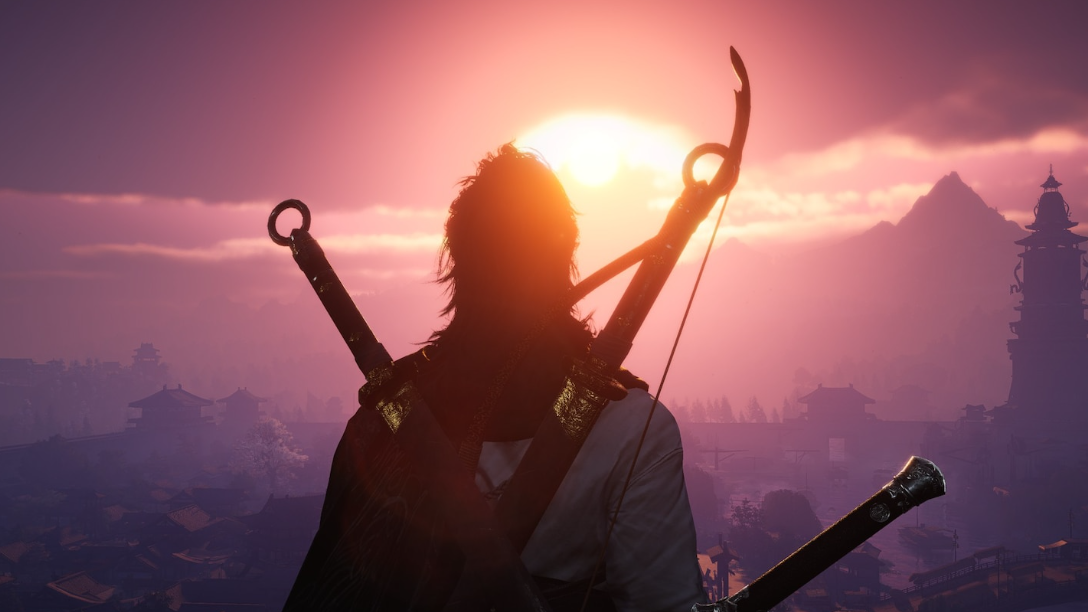The world of Where Winds Meet quietly hides an entire medical profession behind a single exploration quest and a set of map icons. Once you know where to go, you can unlock the Healer career, track down NPC patients, and even answer treatment requests from other players.
Healer profession unlock location
The Healer profession unlocks through a specific Legacy quest in the Qinghe region.
| Requirement | Detail |
|---|---|
| Minimum level | Level 13 |
| Region | Qinghe (north / northwest side) |
| Quest type/name shown in UI | Legacy quest related to the Healer profession (often labeled around “Healer’s Legacy” or “Legacy Healer’s Calling”) |
| Nearby landmark | Mercyheart Village / Mercy Heart Town |
| Key NPC | Mu Ji'an, a doctor treating a patient |
On the world map, look to Qinghe’s northern side near Mercyheart Village. A Legacy-style quest marker appears there, tied to the Healer path. In some UIs, this shows as “Healer’s Legacy”; in others, as a Legacy marker with healer wording such as “Legacy Healer’s Calling” on the far left of Qinghe. You only need to be level 13, and you can trigger it even if you haven’t fully explored that part of the map.
When you arrive, you find Mu Ji'an trying to treat a gravely ill man. He asks you to collect Nightshade herbs from nearby. Even if you already carry Nightshade, you must gather the specific plants marked for the quest. After returning and crafting a basic medicine from your bag, you administer it, then move into a full treatment of the patient. Completing this tutorial treatment formally unlocks the Healer profession and its interface.
Where to find NPC Healer Healing locations on the map
Once the profession is unlocked, the world fills with dedicated “Healer Healing” encounters—injured NPCs and animals that rely on your mastery stat. In Qinghe, each such encounter has a fixed location and reward set.
| NPC (Qinghe) | Afflicted illness | Recommended Healer Mastery |
|---|---|---|
| Old Man Tie | Broken Bone | 1900 |
| Ye Mingyuan | Broken Bone | 3900 |
| A'dan | Broken Bone | 3200 |
| Mao Da | Blood Dysentery | 3200 |
| Mao Er | Blood Dysentery | 3900 |
| Yan Ye | Broken Bone | 1900 |
| Ding Si | Dislocation | 4100 |
| Wine Elder | Wind-Damp Bi Syndrome | 1900 |
| Injured Monk | Dislocation | 3900 |
| Sun Bancheng | Broken Bone | 3200 |
| He Quniang | Water Gu (Fluid Accumulation Toxin) | 3900 |
| Liu Shunzi | Wind-Damp Bi Syndrome | 3200 |
| Xie Weizu | Erysipelas | 3900 |
| Zhou Zhenyan | Erysipelas | 3200 |
| Liu Xie'er | Broken Bone | 1900 |
| Wen Jun | Headache | 4100 (Healing Mastery) |
Each Qinghe Healer Healing encounter grants a consistent bundle of rewards:
| Reward type | Notes |
|---|---|
| Memory x2 | Used for broader progression systems |
| Career Notebook x4 | Core currency to rank up the Healer profession |
| Treasure Coin x5000 | Standard in-game currency |
| Qinghe Exploration x10 | Contributes to region completion |
| Character EXP x1000 | Experience for your main character level |
| Zhou Coin x1000 | Another currency used in vendors and systems |
Kaifeng also has Healer Healing encounters, but their full list and mastery recommendations expand over time. If you’re looking for a dense route to farm Mastery and Career Notebooks early, Qinghe’s set of fixed patients is the most straightforward starting point.
How to spot patients in the open world
Healer content is not limited to the fixed Healer Healing list. NPCs and even animals with illnesses can appear throughout the world.
- Use Wind Sense (
Von PC, right stick click on controllers) to scan your surroundings. - Ill or injured beings are highlighted and gain a special symbol above their head.
- Approach and examine them to see if their recommended mastery falls within your current Healer rank.
Even before formally becoming a Healer, you can stumble onto injured NPCs and trigger the basic healing minigame. However, your prescriptions are random, progression is limited, and you do not grow Healer mastery in the same way. Unlocking the career at Qinghe turns those ad-hoc encounters into a structured path with controlled decks, rank-ups, and better rewards.
How to start healing other players
Once you have the Healer profession unlocked, the profession interface doubles as a matchmaking hub for treating other players’ injuries.
| UI area | Function |
|---|---|
| Professions → Healer → “Provide healing” button | Opens the player-healing screen |
| Suggested Healer tab | For patients: shows recommended players to request |
| Illness Healing tab | For Healers: lists players currently seeking treatment you qualify to heal |
As a Healer, you typically use the “Illness Healing” tab:
- Open the Healer profession panel from the main character menu.
- Select the option labeled “Provide healing” (often bound to
Fon PC from the profession screen). - Switch to the Illness Healing tab to see a list of players, their ailment types (e.g., cracked bone, sprain, venom), and the previewed rewards.
- Click a name to send a co-op request to join their world instance.
If the player accepts, you load into their instance. You cannot treat them mid-combat, so either assist them in their current fight or wait until the fight ends, then use Wind Sense and begin treatment. After the healing minigame, they can award you up to five “likes,” and you are free to leave.
Rejection and silence are common—many players either self-heal, use NPC doctors, or look only for high-mastery Healers who can perform instant treatments instead of running the full minigame. Refresh the Illness Healing list regularly and expect to send multiple requests for each successful session.
Where the “hospital” and healer hub fit in
Beyond ad-hoc co-op, the game centralizes medical activity around a clinic-style location often referred to as a hospital. There, NPC staff can:
- Cure illnesses for a flat fee (around 10,000 gold in many early examples).
- Teleport you to a dedicated medic hub where player Healers frequently gather to “farm likes” and pick up quick treatments.
For players seeking patients as Healers, this hub is one of the densest concentrations of ill characters at any given time. For patients, it is a backup when co-op requests take too long or are repeatedly declined.
How the healing minigame works
Every treatment—whether for a story NPC, a Healer Healing encounter, or another player—runs through the same card-driven duel between you and the illness.
| Core concept | Explanation |
|---|---|
| Vital Energy | Your health during the treatment. If this hits zero, the treatment fails. |
| Severity | The illness’ health bar. You must reduce this to zero to succeed. |
| Fiery Hearts | Action points per round (typically three) used to play prescription cards. |
| Rounds | Turn cycles where you act first with prescriptions, then the illness acts. |
| Time limit | Overall session timer; playing slowly wastes rounds and risks failure. |
Each round, you draw a hand of prescriptions—cards that either attack the illness (reducing Severity) or protect you (shields, reductions in incoming damage, or debuffs on the illness). Fiery Hearts limits how many cards you can play. After your actions, the illness triggers its own move.
Highlighting the illness preview shows what it will do next round, letting you plan between offense and defense. Most encounters expect you to defeat the illness within roughly ten rounds, though that can vary. If the overall timer runs down, the treatment enters a pressure phase where your own health is at greater risk.
Building and tuning your prescription deck
After you become a Healer, prescriptions stop being a random grab-bag and turn into a configurable deck.
- Open the Healer profession screen.
- Go to prescription settings/configuration.
- Left column: currently active cards in your rotation (deck).
- Right column: all prescriptions you’ve unlocked so far.
You define the pool the system draws from rather than the exact draw order. That matters for both difficulty scaling and patient expectations:
- Include a mix of low-cost and high-cost prescriptions so three Fiery Hearts per round never go to waste.
- Carry enough defensive cards to survive high-Severity illnesses but not so many that progression drags.
- Remove niche or underpowered cards you rarely use; each slot is competition for your best tools.
Some prescriptions only reduce defence or provide shields; others deal direct damage. The strongest Healer loadouts typically lean into a core package of high-synergy cards and then invest upgrade materials into them.
Ranking up the Healer profession and empowering prescriptions
Progression as a Healer happens on two layers: your overall rank and the power of individual prescriptions.
| Progression layer | Currency | Effect of upgrades | Typical sources |
|---|---|---|---|
| Healer rank / tier | Career Notebooks | Raises base attributes and diagnosis value; unlocks higher-illness mastery thresholds and quick-heal options | Healer Healing encounters, open-world treatments, purchase in Seasons Shop |
| Prescription power | Healer prescription books (per card) | Increases damage, shields, and utility values for specific prescription types across all copies | Random drops from healer-focused item chests bought in the Seasons Shop |
Career Notebooks drive your rank bar in the Healer UI. Each rank step costs more than the last, and tier jumps become especially expensive. In return, your diagnosis attribute—effectively your healing “mastery” number—climbs, letting you take on illnesses with higher recommendations and unlocking more forgiving thresholds for quick-heal options.
Prescription upgrade books are far more granular. Each card type, such as Essential Remedies, upgrades separately. Improving one card upgrades every instance of that prescription in your deck. These books drop randomly from healer gift boxes purchased in the Seasons Shop, which makes targeting specific cards slower than flat rank progression but significantly boosts performance when you do secure the right upgrades.

Who you can heal and what you cannot do
After unlocking the profession, your patient list is broader than it first appears.
| Target type | How to find them | Notes |
|---|---|---|
| Healer Healing NPCs (Qinghe and beyond) | Fixed map locations; Healer Healing category of Sentient Beings | Best early route for Career Notebooks and exploration progress |
| Random NPCs and animals | Wind Sense in towns, roads, wilderness | Good for variety and flavour, mixed rewards |
| Other players | Illness Healing tab, medic hub / hospital, co-op invites | Reward preview shown before you accept; patients can rate you after |
| Party members (friends) | Same world instance, using Wind Sense and treatment | No need for matchmaking; coordinate in voice or text |
There is one hard limit: Healers cannot treat their own illnesses. When you fall from too high, burn yourself, or pick up something more exotic that won’t self-heal, you must either:
- Visit an in-world doctor NPC and pay their fee.
- Use the “Seek doctor” / “Suggested Healer” functionality and wait for another player to answer your call.
That design keeps the profession socially relevant: every healer will eventually become a patient.
Once you know where to start—north Qinghe near Mercyheart Village—and what icons to chase, the Healer profession in Where Winds Meet becomes less of a hidden side activity and more of a full career path. The Qinghe patients provide a clear on-ramp, the medic hub concentrates demand, and the Illness Healing menu turns stray injuries into a steady stream of co-op encounters. The more you invest in rank and prescriptions, the more the map opens up with illnesses that only you can reliably treat.


